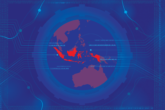August 25, 2021
The Right Way to Structure Cyber Diplomacy
The modern State Department was forged in an era of global transformation. In the 1930s, the department had fewer than 2,000 personnel and, as one historian emphasized, it was a “placid” place that was comfortable with “lethargic diplomacy.” World War II revolutionized the department, which readily transformed itself to handle the demands of planning a new international order. Between 1940 and 1945, the department’s domestic staff levels tripled and its budget doubled.
Today, the State Department is once again confronting the challenge of how to organize itself to cope with new international challenges — not those of wartime, but ones created by rapid technological change. There are ongoing conversations about how the department should handle cyberspace policy, as well as concerns about emerging technologies like artificial intelligence, quantum computing, next generation telecommunications, hypersonics, biotechnology, space capabilities, autonomous vehicles, and many others.
The State Department is once again confronting the challenge of how to organize itself to cope with new international challenges — not those of wartime, but ones created by rapid technological change.
As Ferial Ara Saeed recently emphasized, the department is not structured in a way that makes sense for addressing these matters. She is not alone in having this view, and others have also offered ideas for reform. Former Secretary of State Mike Pompeo’s proposal for a Bureau of Cyberspace Security and Emerging Technologies focused too narrowly on security, as Saeed correctly diagnoses. As an alternative, she proposes consolidating all technology policy issues under a new under secretary, who would report to the deputy secretary of state for management and resources.
The State Department should be restructured so that it can conduct effective cyber diplomacy, but establishing one bureau for all things technology-related is not the way to proceed. Conceptually, the core challenges for cyberspace policy are different from those related to emerging technology issues, and creating one all-encompassing bureau would generate multiple practical problems. Instead, the department should establish a Bureau of International Cyberspace Policy, as proposed in the Cyber Diplomacy Act. Consolidating cyberspace policy issues in a single bureau would provide greater coherence to overarching priorities and day-to-day diplomatic activities. Emerging technology issues should remain the responsibility of the appropriate existing bureaus.
Read the full article from War on the Rocks.
More from CNAS
-
Siliconsciousness: The AI Competition: Public Policy Strategies: Part 1
This episode comprises the first part of our special event, “The AI Competition: Public Policy Strategies”. The event, co-hosted by MIT Technology Review, brings together some...
By Dr. ED McGrady
-
How Drones in Ukraine Are Reshaping War
Samuel Bendett, a senior adjunct fellow at the Center for a New American Security, joins The Cipher Brief to discuss the current situation of drones being used in Ukraine.Watc...
By Samuel Bendett
-
Countering the Digital Silk Road: Indonesia
This year marks the 10th anniversary of the Digital Silk Road (DSR), China’s ambitious initiative to shape critical digital infrastructure around the world to advance its geop...
By Vivek Chilukuri & Ruby Scanlon
-
How Secure Is America’s AI Advantage?
https://www.youtube.com/watch?v=7njJkH7XRa8...
By Paul Scharre



